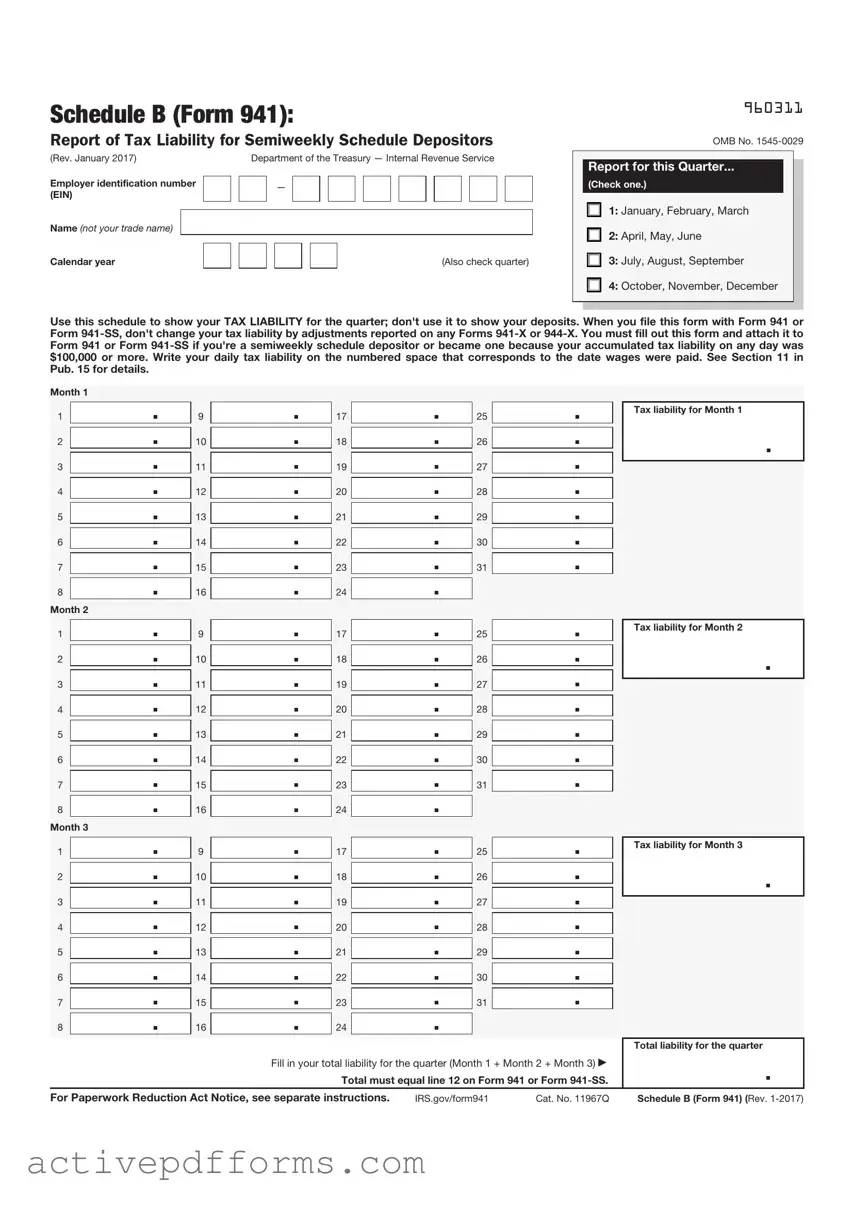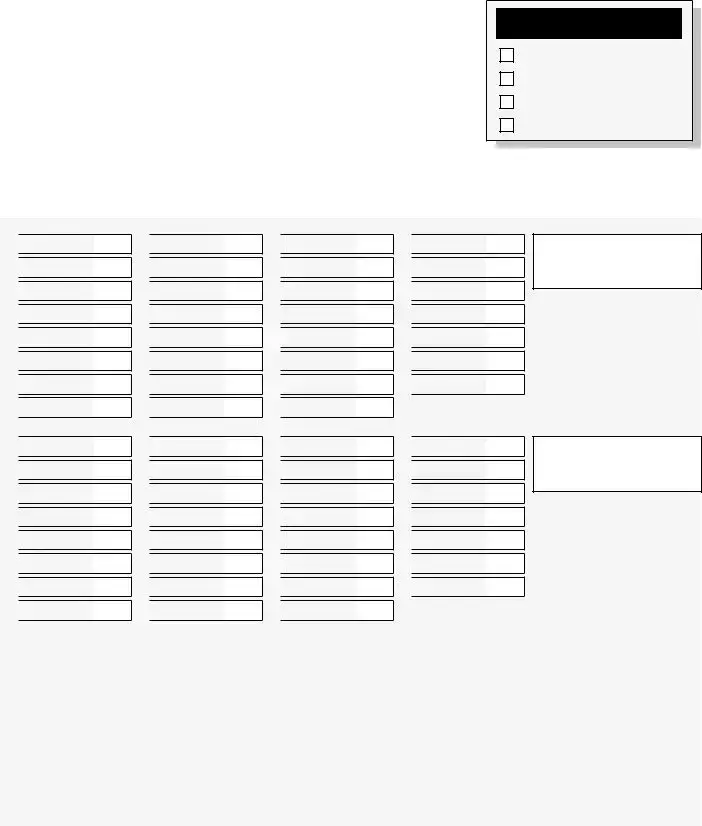What is the IRS Schedule B (Form 941), and who needs to file it?
The IRS Schedule B (Form 941) is a tax document required from employers who withhold income tax, social security tax, or Medicare tax from their employees' paychecks. Employers who make these withholdings must report them quarterly using Form 941, and Schedule B is a more detailed report showing the tax amounts they've withheld for each pay period within the quarter. It's mainly required for employers who are on a semi-weekly schedule for depositing these withholdings.
How do I know if I need to file Schedule B with my Form 941?
If you're an employer who deposits employment taxes on a semi-weekly schedule, you'll need to file Schedule B. Generally, this applies to employers who have accumulated $50,000 or more in employment taxes in the lookback period, which is the four-quarter period ending on June 30 of the prior year. However, if you're a monthly depositor or did not reach this threshold, you likely do not need to file Schedule B.
What information is required on Schedule B?
Schedule B asks for detailed information about the taxes an employer has withheld during each pay period within a quarter. This includes the date of each payroll, the total taxes withheld for that pay period, and the quarter's cumulative total. It's essential to be precise with the dates and amounts to ensure compliance with IRS requirements.
Can I file Schedule B electronically?
Yes, the IRS encourages employers to file Schedule B electronically for convenience and efficiency. Filing electronically also reduces the risk of errors and faster processing times. Employers can use various IRS-approved e-file providers to complete and submit their Schedule B and Form 941.
When is Schedule B due?
Schedule B is due at the same time as Form 941. Generally, this is the last day of the month that follows the end of the quarter. Specifically, the due dates are April 30 for the first quarter, July 31 for the second quarter, October 31 for the third quarter, and January 31 for the fourth quarter. If the due date falls on a weekend or holiday, it is extended to the next business day.
What happens if I file Schedule B late?
Filing Schedule B late can result in penalties and interest charges from the IRS. The penalty for late filing of Schedule B can vary, depending on how late the form is filed and the amount of taxes due. It's important to file on time to avoid these additional costs.
Do I need to attach payment when filing Schedule B?
Schedule B itself does not require a payment when filed. However, it accompanies Form 941, which does generally require a payment if taxes are owed. The payment should match the total tax liability reported for the quarter on Form 941 and Schedule B.
Can I correct a mistake on Schedule B after I've filed it?
If you discover an error on a filed Schedule B, you can correct it by filing a corrected Schedule B along with Form 941-X, Adjusted Employer's QUARTERLY Federal Tax Return or Claim for Refund. This form is used to make corrections to previously filed Form 941 and Schedule B documents. It's important to correct mistakes as soon as they're discovered to avoid potential penalties.
Is there a penalty for over-reporting on Schedule B?
While the IRS primarily concerns itself with under-reporting of taxes, over-reporting can also cause issues. If you over-report, it might affect the amount of taxes you owe or result in a larger refund than you're entitled to. If the IRS discovers the over-reporting, especially if it seems intentional, it could lead to scrutiny or an audit. Corrections should be made using Form 941-X.
Where can I get help with my Schedule B?
There are several resources available for employers who need help with Schedule B. These include the official IRS website, which has guides and resources available free of charge. Additionally, tax professionals and IRS-approved electronic filing services can provide assistance and ensure that your Schedule B and Form 941 are filed correctly and on time.


 .
. .
. .
. .
. .
. .
. .
. .
. .
. .
. .
. .
. .
. .
. .
. .
. .
. .
. .
. .
. .
. .
. .
. .
. .
. .
. .
. .
. .
. .
. .
. .
. .
. .
. .
. .
. .
. .
. .
. .
. .
. .
. .
. .
. .
. .
. .
. .
. .
. .
. .
. .
. .
. .
. .
. .
. .
. .
. .
. .
. .
. .
.